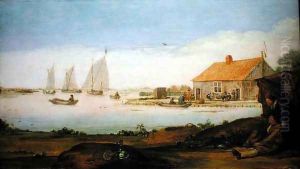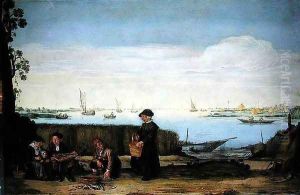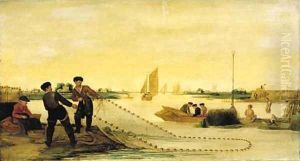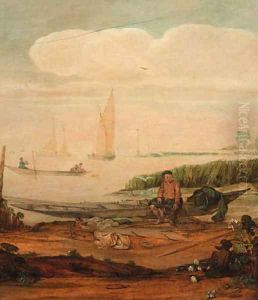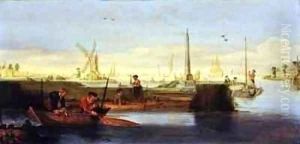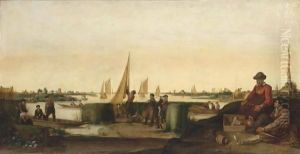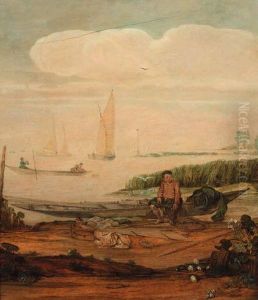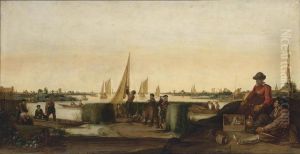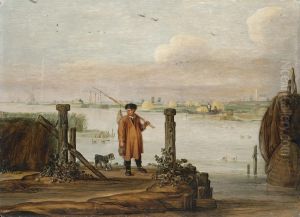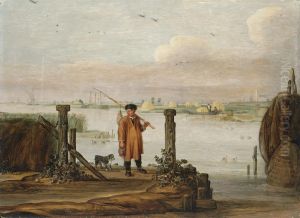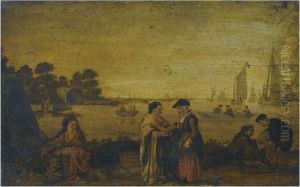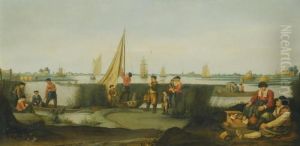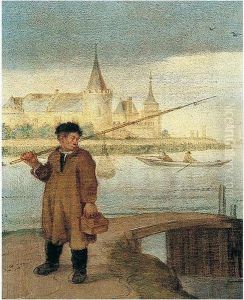Arentsz van der Cabel Paintings
Arent Arentsz van der Cabel, also known as Aert van der Cabel or Ary van der Cabel, was a Dutch Golden Age landscape painter who was born in Rijswijk or The Hague in 1628. He is particularly noted for his Italianate landscapes and maritime scenes, which reflect the influence of his time in Italy and the work of other Dutch Italianates like Jan Asselijn.
Van der Cabel's early life is somewhat obscure, but it is known that he was a pupil of Jan van Goyen, a prominent landscape painter of the era, which had a significant influence on his early works. His style, however, evolved significantly after he traveled to Italy, where he was profoundly influenced by the Italian landscape and the works of Claude Lorrain, among others. This period marked a significant shift in his style, from the more traditional Dutch landscapes to the warmer, more atmospheric Italianate scenes for which he became renowned.
After spending approximately ten years in Italy, where he worked in Rome, Genoa, and Livorno, van der Cabel returned to the Netherlands around 1659. Settling in Lyon, France, for a brief period, he eventually moved to Utrecht where he became a member of the Utrecht Guild of Saint Luke in 1665. His work from this period shows a mature integration of his Dutch roots with the Italianate style, characterized by detailed landscapes filled with classical ruins, pastoral figures, and a warm, golden light.
Van der Cabel's work was well-received in his time, attracting patrons both in the Netherlands and abroad. He was particularly adept at etching as well as painting, which allowed his works to be widely distributed. Despite his success, much of his life and work have been overshadowed by the more famous members of the Dutch Italianate movement.
He passed away in Lyon, France, in 1705, leaving behind a legacy that, while not as celebrated as some of his contemporaries, represents an important bridge between Dutch landscape painting and the Italianate style that swept through much of Europe during the 17th century. His works can be found in various museums and collections worldwide, appreciated for their contribution to the Dutch Golden Age of painting.
